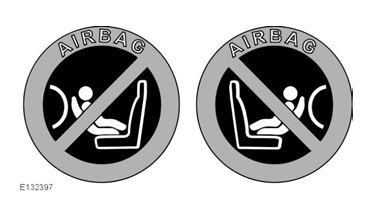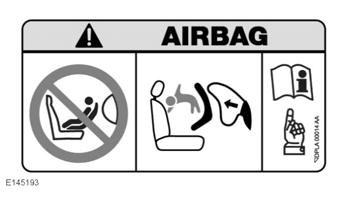Land Rover Discovery: Child seats
For optimum safety, children should travel in the rear of the vehicle at all times; front passenger seat travel is not recommended. However, if it is essential that a child travels in the front (not permitted in Australia), set the vehicle's seat fully rearward and seat the child in an approved forward-facing child seat. Do not use a rearward-facing child seat - an inflating airbag could impact with the seat and cause serious injury.
Do not use a forward-facing child seat until the child using it is above the minimum weight of 9 kg and able to sit up unaided. Up to the age of two, a child's spine and neck are not sufficiently developed to avoid injury in a frontal impact.
Do not allow a baby or infant to be held or carried on the lap. The force of a crash can increase effective body weight by as much as thirty times, making it impossible to hold onto the child.
At all times, children should be restrained in age and size appropriate child seats to reduce the risk of death or serious injury in a crash.
Children could be endangered in a crash if their child restraints are not properly secured in the vehicle. Always follow the instructions that accompany the child seat carefully.
Children typically require the use of a booster seat appropriate to their age and size, thereby enabling the seat belts to be properly fitted, reducing the risk of injury in a crash. Children could be endangered in a crash if their child restraints are not properly secured in the vehicle.
Do not use a child seat that hooks over the seatback. This type of seat cannot be satisfactorily secured and is unlikely to be safe for your child.
The seat belts fitted to your vehicle are designed for adults and larger children.
For their safety, it is very important for all infants and children under 12 years of age to be restrained in a suitable child safety seat, appropriate to their age and size.
If it is essential that a child travels in the front passenger seat (and national or state legislation permits this), Jaguar Land Rover Limited recommends that the following preparations are made before fitting the child restraint:
- Disable the front passenger airbag.
- Adjust the front passenger seat fully rearwards.
- Adjust the lumbar support to its minimum support position.
- Adjust the seat cushion to its highest position. If cushion front tilt adjustment is possible, adjust it to its lowest position.
- Adjust the seatback to an upright position to support the child restraint.
Extreme hazard! Do not use a rearward-facing child restraint on a seat protected by an airbag in front of it!
NEVER use a rearward-facing child restraint on a seat protected by an ACTIVE AIRBAG in front of it, DEATH or SERIOUS INJURY to the CHILD can occur.

This symbol, affixed to the front door B-post on the passenger side, warns against the use of a rearward-facing child seat in the front passenger seat, when a front passenger airbag is fitted and operational.

This symbol, affixed to the passenger side sun-visor, warns against the use of a rearward-facing child seat in the front passenger seat, when a front passenger airbag is fitted and operational.

